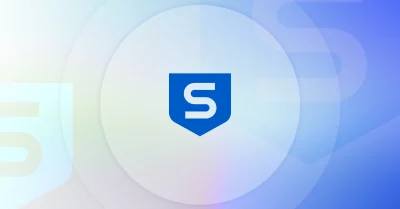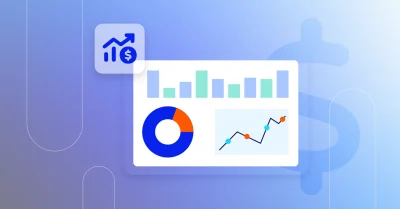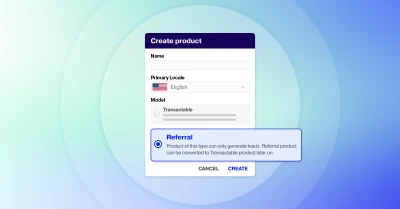Technology vendors worldwide are experiencing a supply chain in flux. As the knock-on effects of COVID-19 forced companies across industries to adjust their working practices and deal with unprecedented levels of uncertainty, digital transformation projects accelerated overnight.
Anything as a Service (XaaS) solutions have never been in more demand with B2B companies that need to support lean operational models and adjust to strategic pivots on the road ahead. Vendors that can not just sell products, but act as expert solutions providers, are set to reap the rewards ahead.
However, the range and availability of XaaS offerings is firmly on the rise alongside increased demand. Those building out a XaaS business will eventually face a point in time when they aren’t able to offer the perfect solutions bundle for customers with their existing product catalog. Fortunately, CloudBlue can help.
To stay competitive and continue offering the most comprehensive service to clients, Technology vendors need to focus on expanding their networks in three key areas:
- Opening up their marketplace to 3rd parties in order to offer solutions that add value to and differentiate the core hardware
- Creating a developer community around their platform, that builds solutions to complement that same hardware
- Facilitating access to 3rd party marketplaces (for example, Azure and AWS) to extend their reach
Prioritizing these actions not only meets immediate customer needs but also generates unlimited growth potential down the line. Through a well built multi-reseller network, vendors can instantly expand their core product offerings without a lengthy time-to-market or steep increase in operational costs. Ecosystems also exponentially boost the potential for increased adoption of the vendors’ own hardware and software solutions through the network of partners.
In short, ecosystems increase profit margins by expanding revenue from recurring subscriptions and lay the foundations for hypergrowth to secure a robust long-term future. Let’s dive deeper into the benefits ecosystems offer, how they function, and how tech vendors can adopt the approach to support XaaS business goals.
Why ecosystems are imperative in 2021
Customers continue to adopt subscription models in their droves. The flexibility to pay only for what they use, when they use it, translates into a direct reduction of costs and allows them to access solutions-driven packages. However, this shift from a CAPEX (capital expenditure) to an OPEX (operational expenditure) model will have left tech vendors who previously relied on revenue from one-off sales faced with diminished returns.
As a result, tech vendors are transforming either their core business model or their channels, or both. It means they not only design and launch subscription-based XaaS offerings, but also streamline their backend operations to reduce errors and operational workload. Only by transforming their business model in this way can tech vendors – who are building their own XaaS marketplace or enabling their channel to build theirs – scale and expand to new heights.
For example, despite the challenges of 2020, Honeywell reported double-digit sales in several industry segments including recurring connected software businesses through their ecosystem efforts. Meanwhile, Schneider Electric increased their margins by 40.4%. Tech vendors that don’t start building an ecosystem not only stand to miss out on increased sales but also risk pushing customers into the hands of competitors who offer broader and more diverse software solutions delivered through customer-centric subscription bundles. Check out more on how tech vendors can boost revenue through digital transformation in our white paper.
How to build a global multi-reseller structure
To be competitive in the XaaS economy, vendors must rely on a well-connected distribution network of channel partners, resellers, and value-added resellers (VAR). Testament to this fact is that five of the biggest US-based tech vendors generate 80% of their global revenues through channel partners, according to a 2019 report from Deloitte.[1]
The added value of an ecosystem marketplace is that, once established, third party resellers in the network can also become champions of the vendors’ original technology solutions. By working with resellers who hold specializations in specific industries or geographies, subscription rates can be increased even further through a wealth of new partnerships. Vendors can also choose to allow trusted third parties to go beyond just resales and develop new solutions for end customers on their behalf.
However, managing a network this sophisticated invariably comes with multiple complexities. Imagine a distribution chain with different hierarchical levels by regions and markets, thousands of product listings in multiple currencies and languages, coupled with the need to calculate monthly, quarterly or annual subscription costs for each customer account. What’s more, the flexible nature of the XaaS model that is so attractive to customers means that billing cycles won’t be static either. The vendor will be required to monitor individual add-ons, increased numbers of licensed users, or any other changes to customer bundles that occur, in addition to sending and recouping payment to vendors and resellers in their network – all in multiple currencies and locations.
If this isn’t addressed by supportive technologies, attempts to scale will be hampered by lengthy manual administration processes that eat away at the potential to increase profit margins and set vendors up for the risk of errors at mass scale. This is why automation technologies are essential to the success of any ecosystem marketplace.
How CloudBlue can help
CloudBlue helps companies build an expansive network of interconnected ecosystems to take subscription-based XaaS offerings to market quickly, efficiently, and at scale by solving the operational challenges associated with building a channel ecosystem. Our platform allows partners to set up their own white-label marketplace instantly, access a pre-integrated network of vendors and resellers, and use easy-to-tailor billing and subscription management solutions.
With CloudBlue, vendors can keep track of recurring monthly sales projections, manage subscription number and license, add new vendors to product catalogs, and manage usage across different countries and currencies. Vendors can easily bundle syndicated products and services from the CloudBlue catalog, including 200+ vendor products and 80,000+ resellers, with a single contract.
Contact CloudBlue today to kick start your ecosystem journey and grow a set of interconnected marketplaces and industries that can help your company stay cost-effective, agile, and relevant in the modern tech landscape.
- Deloitte report on revenue contribution from channel partners of five major US-based tech hardware companies.












